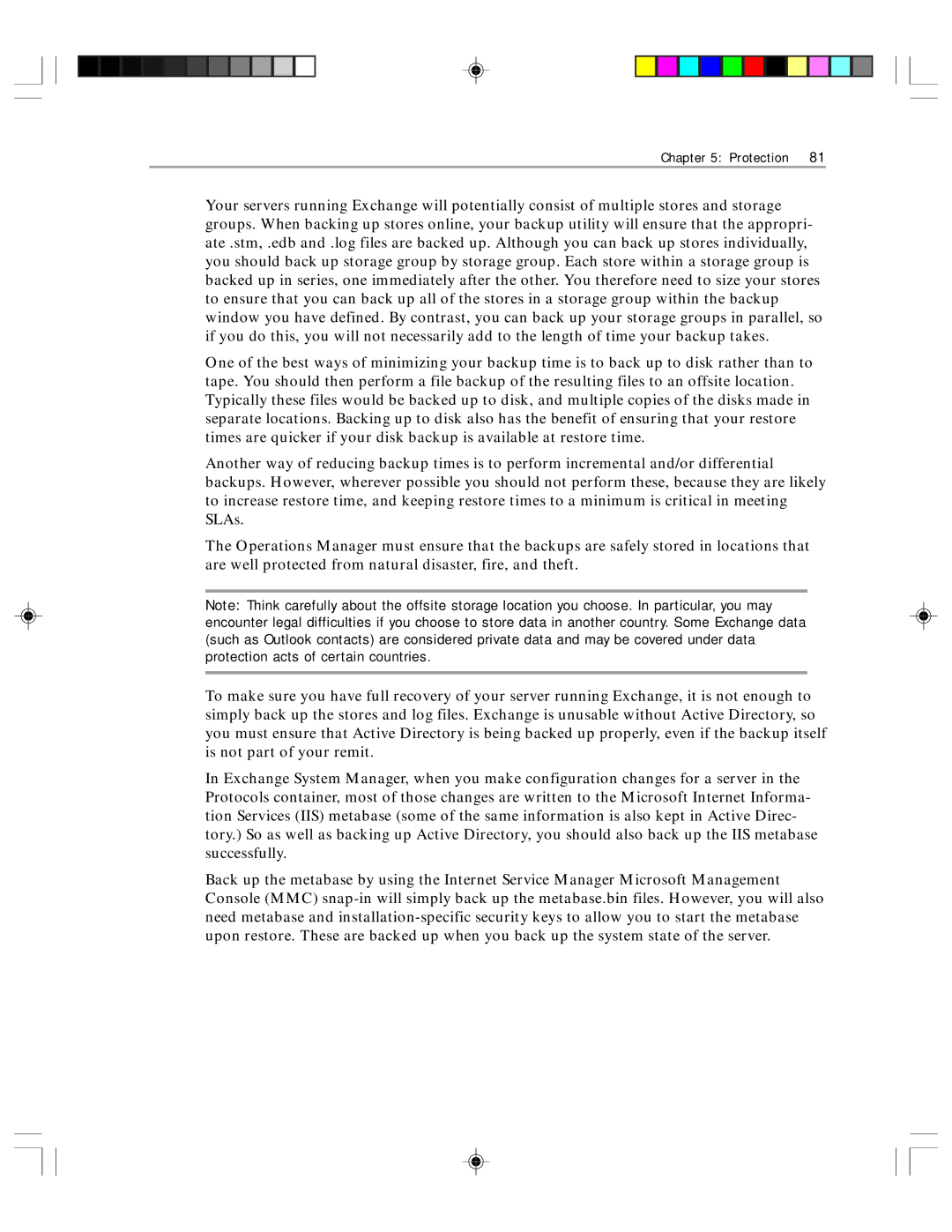
Chapter 5: Protection | 81 |
Your servers running Exchange will potentially consist of multiple stores and storage groups. When backing up stores online, your backup utility will ensure that the appropri- ate .stm, .edb and .log files are backed up. Although you can back up stores individually, you should back up storage group by storage group. Each store within a storage group is backed up in series, one immediately after the other. You therefore need to size your stores to ensure that you can back up all of the stores in a storage group within the backup window you have defined. By contrast, you can back up your storage groups in parallel, so if you do this, you will not necessarily add to the length of time your backup takes.
One of the best ways of minimizing your backup time is to back up to disk rather than to tape. You should then perform a file backup of the resulting files to an offsite location. Typically these files would be backed up to disk, and multiple copies of the disks made in separate locations. Backing up to disk also has the benefit of ensuring that your restore times are quicker if your disk backup is available at restore time.
Another way of reducing backup times is to perform incremental and/or differential backups. However, wherever possible you should not perform these, because they are likely to increase restore time, and keeping restore times to a minimum is critical in meeting SLAs.
The Operations Manager must ensure that the backups are safely stored in locations that are well protected from natural disaster, fire, and theft.
Note: Think carefully about the offsite storage location you choose. In particular, you may encounter legal difficulties if you choose to store data in another country. Some Exchange data (such as Outlook contacts) are considered private data and may be covered under data protection acts of certain countries.
To make sure you have full recovery of your server running Exchange, it is not enough to simply back up the stores and log files. Exchange is unusable without Active Directory, so you must ensure that Active Directory is being backed up properly, even if the backup itself is not part of your remit.
In Exchange System Manager, when you make configuration changes for a server in the Protocols container, most of those changes are written to the Microsoft Internet Informa- tion Services (IIS) metabase (some of the same information is also kept in Active Direc- tory.) So as well as backing up Active Directory, you should also back up the IIS metabase successfully.
Back up the metabase by using the Internet Service Manager Microsoft Management Console (MMC)
